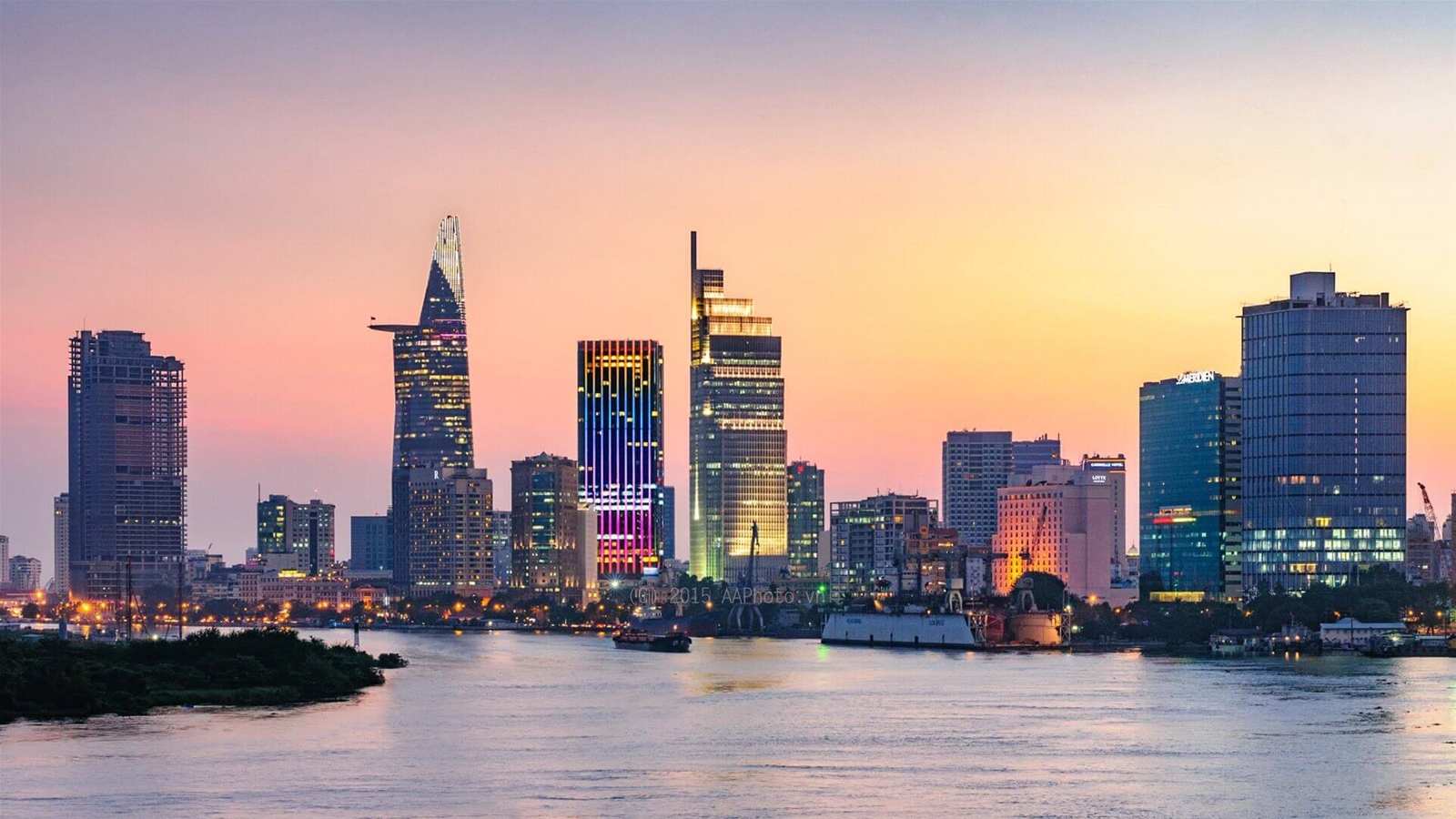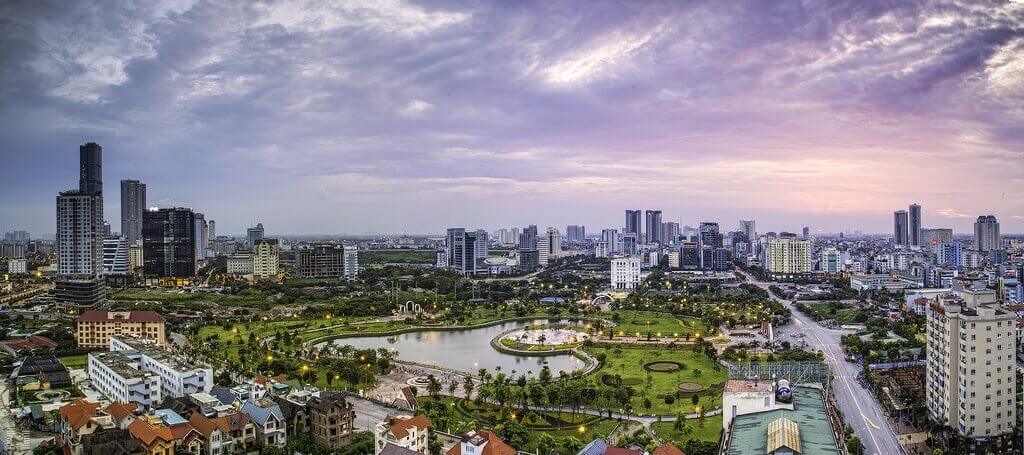
As host for the second Trump-Kim Summit, held in February, Vietnam continued to elevate its standing in international affairs, catching global attention for the successful transformation of its economy over the last 30 years. From one of Asia’s least-developed countries in the 1980s, Vietnam has transformed into a booming middle-income economy with GDP growth amongst the fastest worldwide in recent years.
In the first quarter of 2019, Vietnam’s GDP grew 6.79% year-on-year (YoY) and is anticipated to be the highest in ASEAN from 2019-2023, whilst the Vietnam dong (VND) remains one of the region’s most stable currencies. This economic growth has been reinforced by abundant FDI inflow, in which the manufacturing and processing industries dominated, accounting for 75% of newly registered capital. In January, Vietnam’s first aircraft engine parts factory, Hanwha Aero Engines (Korea), began shipping products following a US$200 million investment. In March, Universal Alloy Corporation, the world’s leading manufacturer of aerospace products, began construction of a 17-ha factory in Da Nang Hi-tech Park with an estimated total investment capital of US$170 million.

Privately funded investments into infrastructure have been contributing more to the economy, currently comprising the largest component of total investment. In late December last year, Van Don International Airport opened in Van Don District, Quang Ninh Province, which is a planned Special Economic Zone focusing on logistics, tourism and luxury entertainment. The airport was developed by Sun Group – a local real estate developer – under a private-public partnership structure with total investment of US$324 million. Another privately funded aviation project was Cam Ranh Airport’s new international terminal. Total current capacity is 4.5 milliion passengers per annum, but this number is expected to reach eight million by 2030.
In the real estate capital market, there were two big transactions in the first quarter of 2019. Hanoi Hotel Tourism Development acquired 75% interest of InterContinental Hanoi West Lake Hotel for approximately US$53 million, while Nam Long Group announced the acquisition of a 70% interest in Dong nai Waterfront City project for approximately US$100 milion from Portsville Pte.Ltd, a subsidiary of Keppel Land Limited. The 170-ha township development project is situated near the crossroads of ho Chi Minh City, Binh Duong and Dong Nai provinces, an important economic hub in southern Vietnam.

Viet Nam is an attractive investment destination in the region
Since joining APEC in 1998 and WTO in 2007, Viet Nam has been carrying out its commitments to international economic integration with vigour. The country has opened its door to cross-border trade and investment, and undergone various institutional and policy reforms. New bilateral and multilateral relations have been forged, giving Viet Nam impetus to to adhere to international standards of doing business.
2018, in particular, marked an important milestone in the implementation of Viet Nam’s economic integration commitments. Within ASEAN, the country is implementing its commitments to cut 98% of tariff lines. In terms of trading with the Republic of Korea, Japan and Australia, Viet Nam is reducing taxes for products on the sensitive list.
By proactively realising those commitments and pledging to create favourable conditions for foreign enterprises, the country is also reaffirming its important geopolitical status in South East Asia and the Asia-Pacific region.
From possessing a convenient location in the region to unlocking some achievements in institutional reform, Viet Nam has proven to remain an attractive investment destination in the region.

Why invest in Vietnam?
Strategic location
Located next to China, Viet Nam’s proximity makes it an ideal alternative location for investors seeking to diversify their supply chains from China. Investors are able to limit interruptions or delays to existing supply chains in China.
Increasing integration into global economy
Participation in strategic trade agreements, including the AFTA, EU-Viet Nam FTA and CPTPP, demonstrates the commitments of Viet Nam towards trade openness with other countries.
Strengthening institutional and regulatory framework
Over the years, the Vietnamese government has improved its legal and institutional framework to create a transparent and fair investment environment for investors. This has been reflected in the improvements in Viet Nam’s Ease of Doing Business ranking from 99th in 2014 to 69th in 2019.
Large market with increasing purchasing power and an emerging middle class
With a population of about 95 million, ranking 14th in the world, Viet Nam has enormous market potential to various types of business investment. According to PwC’s World in 2050 report, Viet Nam is forecast to be among the Top 20 economies in the world by 2050.
Young population and large workforce, with growing talents
Viet Nam is well known for its golden age structure with more than 52% of people in working age and about 97% of the working age population is literate, according to the Ministry of Education and Training. The government has taken steps to meet the demand of high-skilled industries, including increasing vocational and technical training. In 2018, there were more than 1,900 vocational training centres across Viet Nam.
Stable and highgrowth economy
Viet Nam is among the fastest growing economies in ASEAN and is poised for robust growth, projected to expand at 6.4% annually between 2018 and 2022, according to Moody’s Investor Services. International organisations such as the World Bank and ADB have praised Viet Nam for the stable growth of the macro-economy.
Competitive labour cost and increasing productivity
The rise of wages in China, coupled with the recent trade war between the US and China, has forced manufacturers to look for an alternative market. This is an opportunity for which Viet Nam is well positioned. For example, manufacturing labour costs per hour in China are projected to reach US$6.5 in 2020, while these costs are about US$3 in Viet Nam, according to Statista. Vietnamese workers are also producing higher value added goods. Between 2008 and 2016, labor productivity in Viet Nam increased by 22.5%. In 2018 alone, labour productivity rose by 6% compared to 2017.
Continuously improving infrastructure
Viet Nam is investing heavily in infrastructure, such as highways and sea ports, to provide an efficient business environment for investors. From 2012 to 2016, Viet Nam’s infrastructure spending growth was among the fastest in ASEAN, at 11.5% p.a., nearly double its GDP growth. This has helped boost the country’s World Bank Logistics Performance Index ranking in 2018 by 25 spots to the 39th position among 160 countries, putting Viet Nam ahead Malaysia, Indonesia and the Philippines.

















